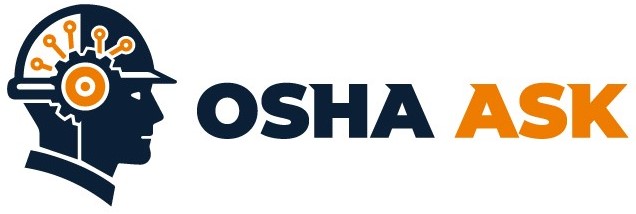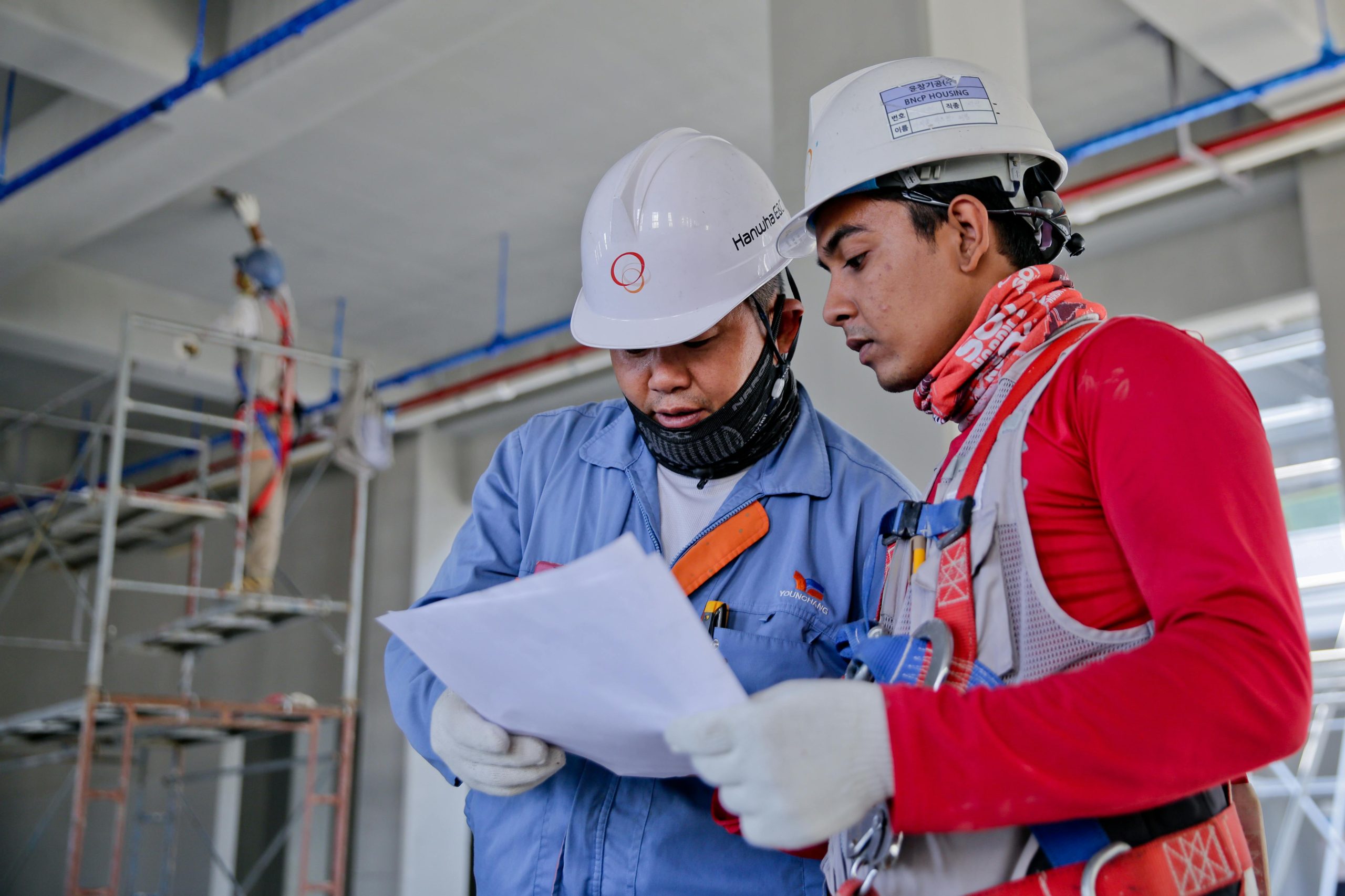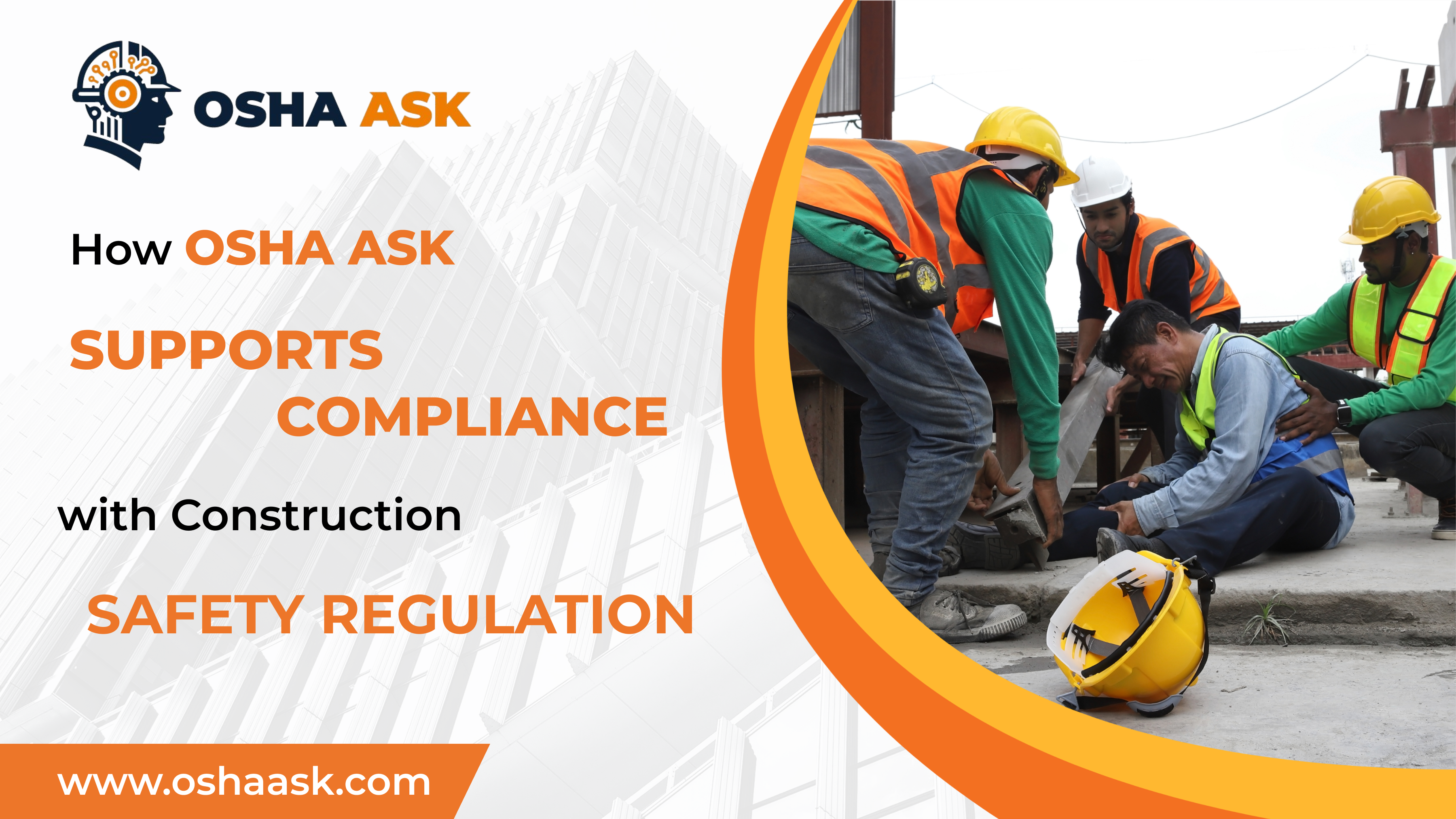A New Era of Efficiency started in the construction industry, where every movement is meticulously planned, every piece of equipment operates at peak efficiency, and safety incidents are a thing of the past. This is not a scene from a futuristic movie, but a reality made possible by artificial intelligence (AI).
Traditionally known for its manual labor and complex logistics, the construction industry is undergoing a digital transformation. AI is at the forefront of this revolution, bringing unprecedented efficiency and safety to construction projects.
In 2022, the AI in construction market was valued at over $2.5 billion and is projected to grow at a staggering CAGR of 20% from 2023 to 2032. This growth is driven by the need for improved efficiency, cost savings, and enhanced safety measures.
AI technologies are enabling construction companies to optimize project scheduling, resource allocation, and task management, leading to reduced timelines and costs.
OshaAsk is AI-driven software designed to streamline construction operations. By leveraging AI, OshaAsk helps construction managers make data-driven decisions, predict equipment failures, and ensure compliance with safety protocols.
The impact of AI on construction is profound. Deloitte estimates that AI and advanced data analytics could bring cost savings of 10% to 15% for construction projects.
OSHAASK harnesses AI to revolutionize construction safety, turning compliance into a seamless, automated process.
The Role of AI in Enhancing Construction Efficiency
AI is playing a pivotal role in modernizing construction processes. From project planning to execution, AI-driven tools are optimizing every aspect of construction. Here’s where AI is shaking things up:
Automating repetitive tasks
One of the most significant benefits of AI in construction is its ability to automate mundane and repetitive tasks. For instance, tasks such as scheduling, resource allocation, and progress tracking can be efficiently managed by AI systems, freeing up valuable time for project managers and on-site teams. OshaAsk, for example, uses AI to optimize project timelines, ensuring that resources are used effectively and delays are minimized.
Improving Safety through Predictive Analytics
Safety is a critical concern in construction, where accidents can lead to costly delays and, more importantly, endanger lives. AI-driven platforms like OshaAsk leverage predictive analytics to identify potential hazards before they become serious issues. By analyzing data from past projects, AI can forecast safety risks and suggest preventive measures, significantly reducing the likelihood of accidents on the job site.
Enhancing Decision-Making with Real-Time Data
The construction industry relies heavily on timely, accurate information to make informed decisions. AI facilitates this by processing vast amounts of data in real time, providing insights that help project managers make quick, informed decisions. OshaAsk’s AI-powered analytics deliver actionable insights that enable construction companies to adapt to changing conditions, ensuring that projects stay on track and within budget.
What Are The Benefits of AI-Powered Automation in Construction
OshaAsk is a comprehensive AI-driven software designed to streamline construction operations. Here are some of the benefits it offers:
Reducing Costs and Increasing Profitability
Going over budget is a common challenge in construction projects. AI can help mitigate these issues by optimizing resource allocation and reducing waste. OshaAsk’s automation streamlines everything from procurement to labor management, leading to major cost savings. By minimizing inefficiencies and preventing costly errors, AI-powered tools contribute to improved profitability.
Enhancing collaboration and communication
Good communication is crucial for any construction project to succeed. AI enhances collaboration by facilitating seamless communication between teams, regardless of location. OshaAsk integrates AI to ensure that all stakeholders have access to up-to-date information, enabling better coordination and reducing the chances of miscommunication. This level of transparency helps keep everyone aligned with the project goals.
Accelerating project completion
Time is of the essence in construction. Delays can lead to increased costs and missed opportunities. AI-driven solutions like OshaAsk help accelerate project completion by optimizing workflows and reducing bottlenecks. By automating routine tasks and providing real-time insights, AI ensures that projects are completed on time, if not ahead of schedule.
How OshaAsk is Leading the AI Revolution in Construction
The future of AI in construction looks promising. As AI technologies continue to evolve, we can expect even more innovative solutions that will further streamline operations and enhance productivity. OshaAsk is at the forefront of this revolution, offering cutting-edge tools that are transforming the construction industry.
AI-Powered Project Management
OshaAsk is at the forefront of AI integration in the construction industry. Its project management tools are designed to streamline every aspect of construction, from planning to execution. By utilizing AI, OshaAsk offers dynamic scheduling, real-time tracking, and predictive analytics, enabling construction firms to manage projects more efficiently and with greater precision.
Intelligent Safety Management
OshaAsk’s AI-driven safety management features are designed to create safer work environments. The platform continuously monitors on-site activities and uses AI to identify potential hazards. By providing real-time alerts and recommendations, OshaAsk helps construction companies maintain high safety standards, protect workers, and reduce liability risks.
Data-Driven Decision Support
Data is a powerful asset in construction, and OshaAsk harnesses AI to turn data into actionable insights. The platform collects and analyzes data from various sources, offering project managers a comprehensive view of their operations. This data-driven approach enables better decision-making, allowing construction firms to respond quickly to challenges and capitalize on opportunities.
Conclusion: The Future of Construction with AI
The construction industry is poised for significant advancements, thanks to AI-powered automation. Solutions like OshaAsk are leading
the way by providing tools that enhance efficiency, improve safety, and drive profitability. As the industry continues to embrace AI, construction companies that leverage these technologies will be better equipped to meet the demands of the future.
OshaAsk stands as a testament to the transformative power of AI in construction, offering a comprehensive platform that streamlines operations and delivers tangible results. By adopting AI-driven tools like OshaAsk, construction firms can stay ahead of the curve, ensuring successful project outcomes and sustained growth in an increasingly competitive landscape.





